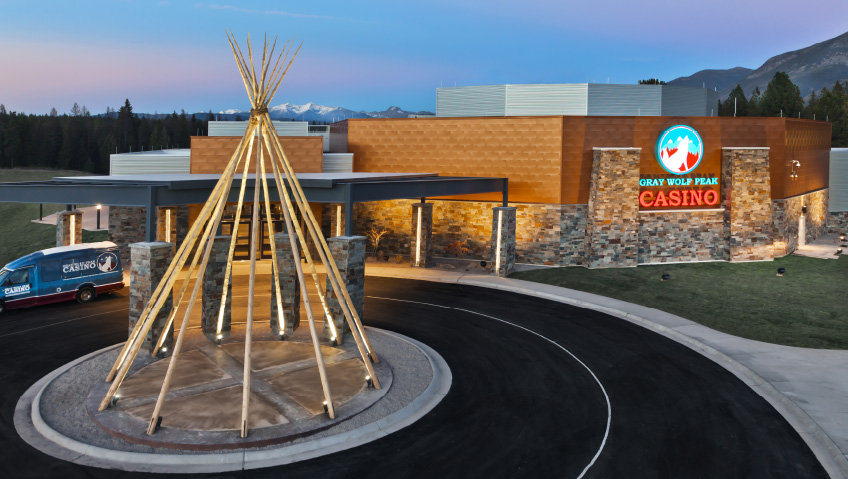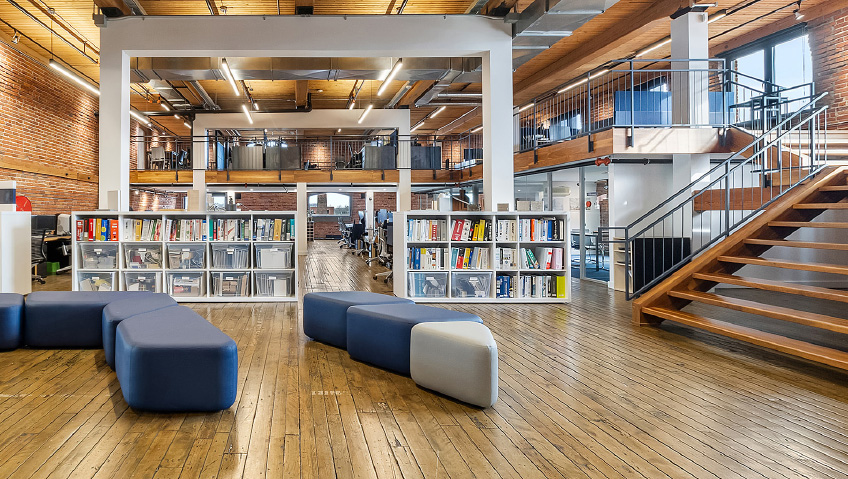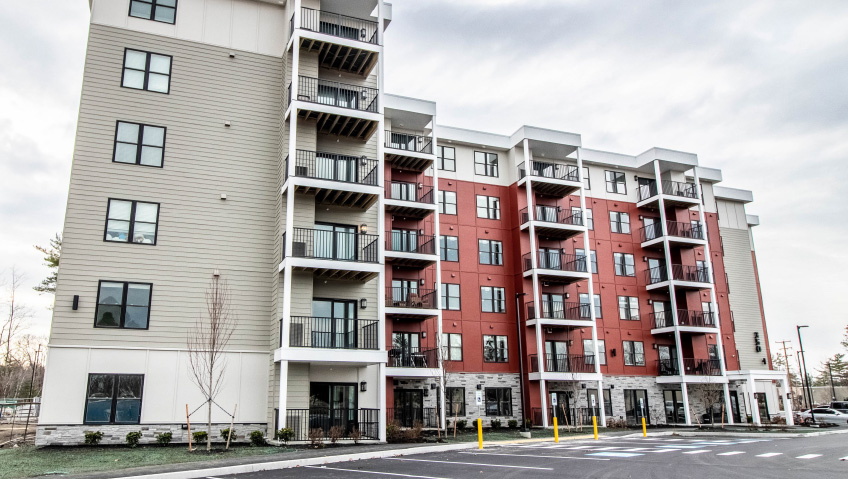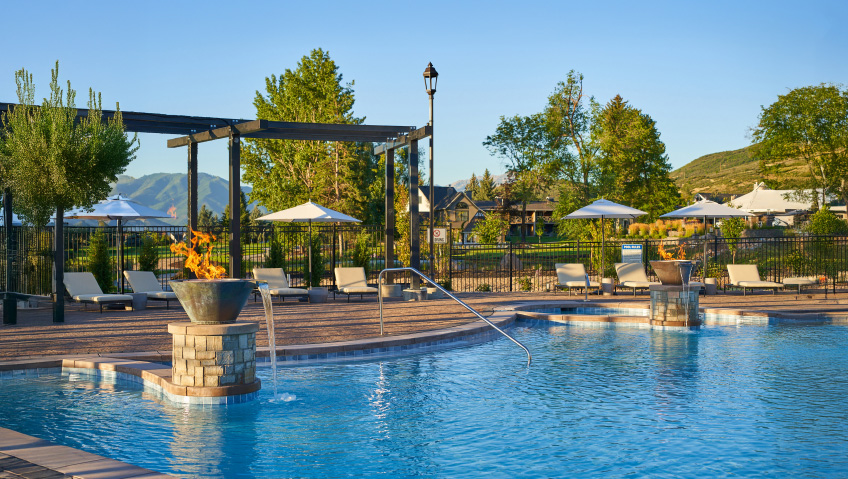While the gaming industry is all about fun and recreation, outstanding architectural design is not child’s play—which is why it is best left to experts. As a full-service architectural firm, LSE Architects of Minneapolis, Minnesota specializes in designing modern, luxury casino complexes. The company also designs private education facilities, public libraries, community projects, commercial buildings, and a range of housing types. A leader in its field, LSE has completed 1015 projects in its time.
Employing 50 industry professionals, LSE’s owners—college friends Mohammed Lawal, Chief Executive Officer and Principal Architect, and Quin Scott, President and Principal Architect—founded the company in collaboration with Ron Erickson in 2011. Together with Ryan Johnson, Principal – Hospitality Sector, this team of leaders takes pride in being personally involved in the design process and the running of the business. “With LSE, clients get that direct involvement of the company leadership on each project,” says Johnson.
Managing deadlines with ease
Strong leadership is crucial in an industry that demands bringing multiple design packages to market on various projects with tight deadlines. “We’re working on projects that are intentionally fast-tracked and comprise multiple bid packages; to expedite the process, the contractor may be pouring footings and setting steel at the job site while we’re finalizing the drawings for the rest of the project,” Scott explains.
To help project owners reach their goal of achieving fully operational establishments as quickly as possible—and to ease cash flow—LSE Architects guides them in designing and building such projects in stages. With decades of expertise to share, the team makes ideation and design significantly easier and faster for project owners, making the idea of generating revenue a quicker reality.
The approach has proven successful, with the team completing a 275,000-square-foot project in just 14 months. “It’s aggressive, it’s fast, and we work hand in hand with the contractors to manage budgets and get drawing packages together,” says Scott.
Strong relationships with Tribal Nations
Competing for casino design business across the United States, the owners of LSE Architects have been creating a name for themselves since the beginning of the 1990s; these were the early days of the Indigenous-owned gaming industry, originating in Minnesota. Quin Scott became involved in the first casino built by the Shakopee Mdewakanton Sioux Community, while Mohammed Lawal worked on a similar project for the Mille Lacs Band of Ojibwe.
While Las Vegas and Atlantic City were both prime gaming hubs, the Indigenous-owned casinos would change the gaming scene for good. These projects provided the two architects with an opportunity to establish long-lasting relationships with the tribes they served, taking them from Minnesota to the Dakotas, Wisconsin, and later across the country. Today, these casino projects represent nearly half of the company’s annual business.
“Trust is a big factor in working on tribal projects. Ryan continues our legacy working with repeat clients,” Scott says.
He also points out that these relationships often lead to unrelated projects that enhance and support the tribe in myriad ways—for example, the Muckleshoot Community Center for the Muckleshoot tribe in Washington, and three community projects for the Leech Lake Band of Ojibwe in Minnesota. The breathtaking project in Leech Lake comprises a $30 million wellness center that will house a health clinic and fitness facilities, including basketball courts, a running track, a gym, a swimming area, a splash pad, and water slides.
Yet, it is casino design that keeps the team inspired. “We like the gaming projects because of their scale, their pace, and their design opportunities,” Scott adds, highlighting that the designs for tribal casinos typically begin as a completely blank slate.
Creating the modern casino
The key advantage of the firm’s offering, however, resides in the spectrum of additional expertise it provides—like interior design. With so much of this type of project design relying on a thorough understanding of a building’s bones, its architects and interior designers work together seamlessly to create integrated designs, avoiding the challenges typical of third-party collaborations on such projects. To this end, LSE’s engineering partners also join the conversation to help render successful outcomes.
LSE Architects wastes no time in getting its part of the work done correctly the first time. The team understands that the previous century, where casino design often focused on gaudy themes and dark interiors that encouraged guests to lose track of daylight altogether, is now well and truly over and today’s more lavish, commercial casinos reflect modern sophistication, with an array of restaurants, luxury hotels with spas, and swimming pools enhancing the overall experience.
Now, clean lines, thoughtful planning, high-end materials, and fine furnishings are at the center of casino design. As such, the LSE design team guides customers toward creating spaces that build successful businesses—something the company takes immense pride in. “We help our clients understand that if you design a building with a certain image, you will receive a greater return on your investment,” Scott says.
The result is tribal ownership of high-quality casino resorts that are now much more accessible throughout the United States. “You don’t have to go to Las Vegas and Atlantic City for big, nice resorts anymore; tribal casinos have raised the bar across the board,” he adds.
Projects to be proud of
Rooted in its reputation for outstanding commitment, the LSE team goes to great lengths to ensure that it supports its clients throughout the entire design and construction process. With the team’s expert understanding of layout and design psychology, its projects are successful, in part, thanks to its architectural and interior designers’ talent and thoughtfulness. The result is a portfolio of impressive projects, including Prairie Flower Casino in Carter Lake, Iowa; WarHorse Casino in Lincoln, Nebraska; and 400 Horses Casino in Polson, Montana, projects which have all made—or are soon to make—a big splash in their respective communities.
Prairie Flower Casino “is a testament to the Ponca Tribe of Nebraska’s commitment to honoring their heritage while creating growth opportunities,” says the company. “The casino’s design draws inspiration from the sweeping prairie grasses of the Tribe’s ancestral Nebraska lands,” with organic lines, earthy tones, and natural materials that echo the beauty and resilience of the land.
In February of this year, a significant expansion opened that tripled the size of Prairie Flower Casino’s gaming operations, positioning it as a leading entertainment destination in the region. Future phases of development promise to double the casino’s size once more, introducing a 200-room hotel tower, an event and conference center, and an upscale dining venue.
The WarHorse Casino project got underway in September 2022, and melds contemporary sophistication with branding elements such as the iconic blue agate featured throughout the property. Nebraska’s first full-service casino following the legalization of gambling in 2020, WarHorse Casino is a pioneer in entertainment and hospitality in the region. “The property’s architectural design emphasizes clean lines, vibrant interiors, and a seamless flow between spaces, ensuring an engaging and energetic atmosphere,” LSE describes.
Phase 2 of the project, completed in November 2024, doubled the size of the gaming floor and introduced new spaces and premium seating to elevate the guest experience. Phase 3, an expansion which will feature a vibrant food hall, a fine dining restaurant, a central feature bar, and exclusive High Limits and VIP areas, is currently in design, and the final phase, Phase 4, will see the complete vision for WarHorse Casino come to fruition. This will include a 150-room hotel offering refined accommodations and a 15,000-square-foot event center and meeting space.
The 400 Horses Casino, located in West Polson, broke ground earlier this year in a stunning setting boasting breathtaking views of the Mission Mountains and Flathead Lake. This casino’s design reflects its singular location and proximity to the airport, incorporating an aviation-themed atmosphere that provides guests with a unique experience blending natural beauty with top-tier entertainment.
The 400 Horses Casino is being built with future growth in mind, says the company, including an 80-room hotel, a swimming pool, and a versatile multi-purpose event center. “The hotel will offer modern amenities… while the swimming pool will enhance the resort-style experience. The multi-purpose event center will serve as a venue for concerts, conventions, and community gatherings, providing a space for large-scale events to attract visitors across the region… It’s a place that promises to evolve, offering something for everyone, from casual visitors to event-goers, ensuring its long-term success and prominence in the region,” says LSE. The casino is expected to be completed by June 2026.
Projects such as these exemplify LSE’s pursuit of growth across its existing service portfolio—and specifically in the hospitality sector—yet the firm’s aim for expansion is, as always, underpinned by mindful and strategic planning and its signature collaborative approach. “We’ve developed our leadership team with Ryan and three other principals who continue to grow various market sectors across the nation,” says Scott. And while many of its clients’ businesses may be in gaming, LSE Architects continues to be a safe bet, delivering trust by design.






